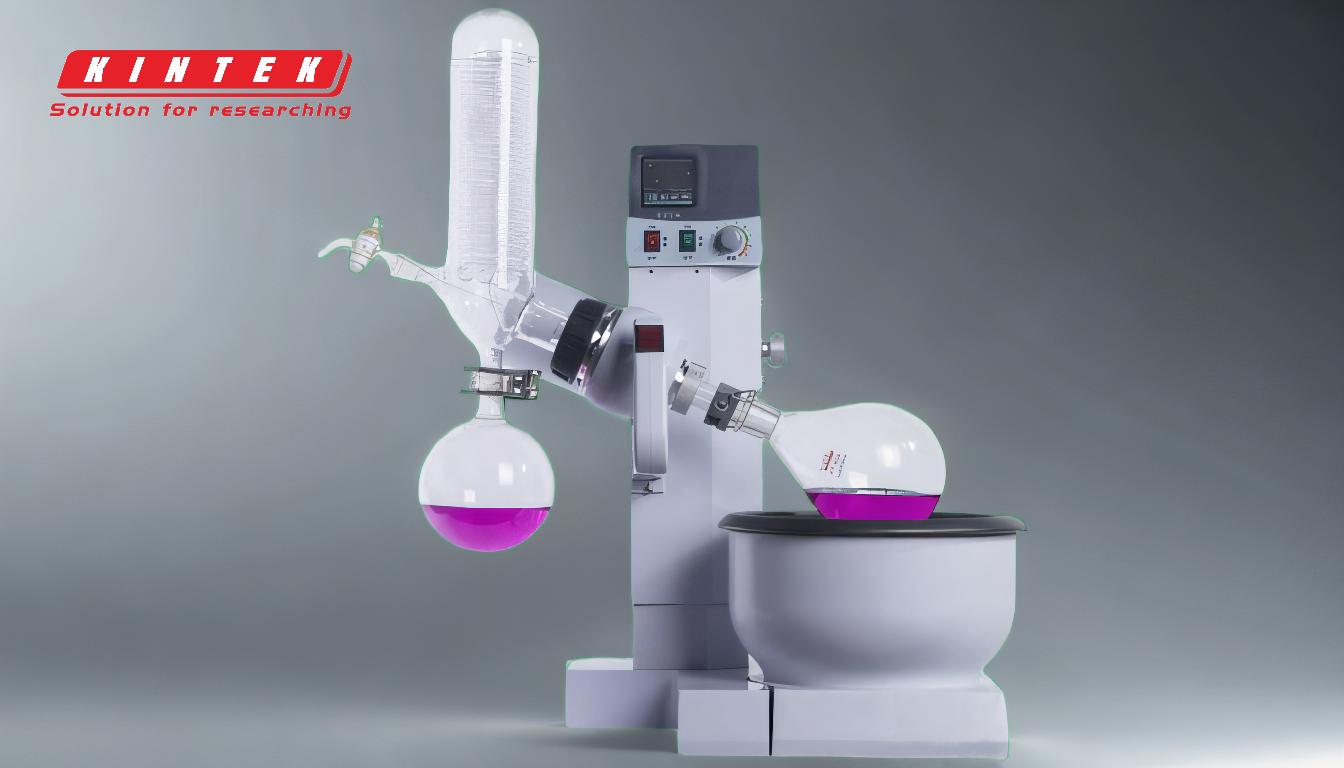For rotary evaporation of n-hexane, the recommended temperature range is typically between 25°C and 50°C. This range ensures efficient evaporation while minimizing the risk of bumping, which can occur at higher temperatures. Lower temperatures within this range may slow the process but provide greater stability and safety. Additionally, using a vacuum pump or sink aspirator is essential for achieving the necessary pressure conditions. Tools like a manometer and distillation nomograph can help fine-tune the settings for optimal results. Consistency in temperature and pressure is key to achieving reliable and efficient evaporation of n-hexane.
Key Points Explained:

-
Recommended Temperature Range for n-Hexane:
- The optimal temperature range for rotary evaporation of n-hexane is 25°C to 50°C.
- This range balances efficiency and safety, ensuring that the solvent evaporates effectively without causing bumping or thermal decomposition.
-
Importance of Lower Temperatures:
- Lower temperatures (closer to 25°C) reduce the risk of bumping, a phenomenon where the solvent boils violently and can cause splashing or loss of sample.
- While lower temperatures may slow the evaporation process, they provide greater stability, especially for volatile solvents like n-hexane.
-
Role of Vacuum Pressure:
- A low-vacuum pump or sink aspirator is necessary to achieve the required pressure for efficient evaporation.
- Proper vacuum settings help lower the boiling point of n-hexane, allowing it to evaporate at lower temperatures.
-
Use of Tools for Optimization:
- A manometer can be used to monitor and adjust the vacuum pressure accurately.
- A distillation nomograph is a helpful tool for determining the optimal temperature and pressure settings based on the solvent properties.
-
Preventing Thermal Decomposition:
- Maintaining the water bath temperature within the recommended range (e.g., 30-40°C) helps prevent thermal decomposition of n-hexane and other sensitive compounds.
- Lower water bath temperatures are particularly beneficial for heat-sensitive materials.
-
Consistency and Automation:
- For consistent results, it is advisable to set the heating bath to a stable temperature (e.g., 50°C) and the chiller to a lower temperature (e.g., 10°C).
- Some rotary evaporators feature a solvent library that automatically adjusts the vacuum and temperature settings based on the selected solvent, such as n-hexane.
-
Safety Considerations:
- Ensure proper ventilation, especially when working with volatile solvents like n-hexane.
- Avoid reactive solvent combinations and always work in a well-ventilated area or fume hood if necessary.
By following these guidelines, you can achieve efficient and safe rotary evaporation of n-hexane while minimizing risks and ensuring consistent results.
Summary Table:
| Key Factor | Details |
|---|---|
| Recommended Temperature | 25°C to 50°C for efficient evaporation and safety. |
| Lower Temperature Benefits | Reduces bumping risk and enhances stability for volatile solvents. |
| Vacuum Pressure Tools | Use a low-vacuum pump or sink aspirator for optimal pressure conditions. |
| Optimization Tools | Manometer and distillation nomograph for precise settings. |
| Safety Measures | Maintain proper ventilation and avoid reactive solvent combinations. |
| Consistency Tips | Set heating bath to 50°C and chiller to 10°C for stable evaporation. |
Need help optimizing your rotary evaporation process? Contact our experts today!










